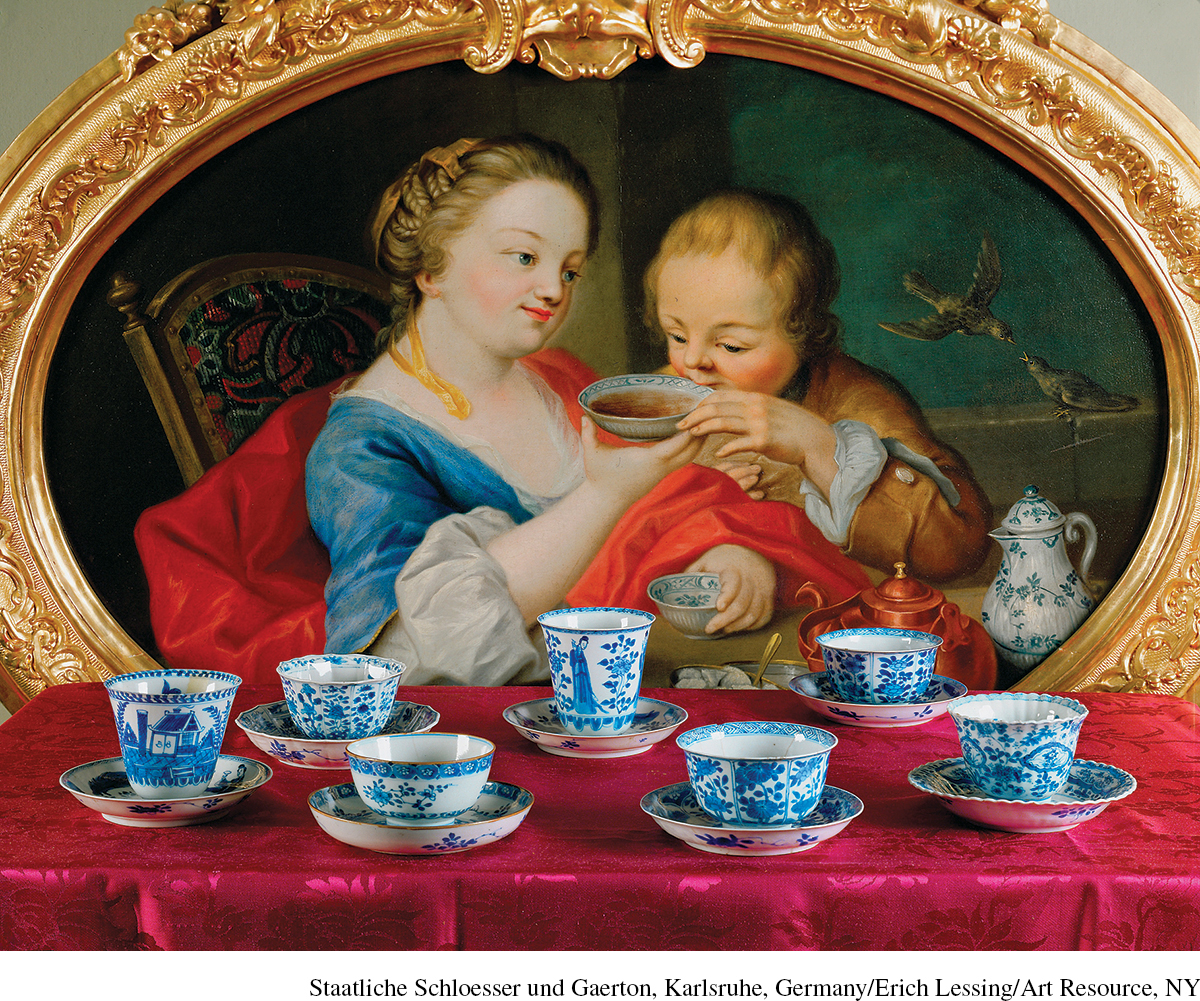14.1 Tea and Porcelain in Europe
More than the peoples of other major civilizations, Europeans in the early modern era embraced the goods of the world. They had long been fascinated by and impressed with the wealth and splendor of Asia, which Marco Polo had described in the early fourteenth century after returning from his famous sojourn in China. Now in the early modern era, Western Europe was increasingly at the hub of a growing network of global commerce with access to products from around the world. Tea, porcelain, and silk from China; cotton textiles and spices from India and Southeast Asia; sugar, chocolate, and tobacco from the Americas; coffee from the Middle East—
Source 14.1, which shows a German painting from the early eighteenth century, illustrates the growing popularity of tea as a beverage of choice in Europe as well as Chinese teacups. Long popular in China and Japan, tea made its entry into Europe in the sixteenth century aboard Portuguese ships. Initially, it was extremely expensive and limited to the very wealthy, but the price dropped as the supply increased, and by the eighteenth century it was widely consumed in Europe. Chinese teacups without handles also became popular and arrived packed in tea or rice via European merchant vessels. Like many other porcelains, these teacups had been created by Chinese artisans specifically for a European market. Those sitting on the table in the foreground of the image were manufactured in China between 1662 and 1722. Notice the practice of pouring the tea into the saucer to cool it.

- What foreign trade items can you identify in this painting?
- Note the European house on the teacup at the bottom left. What does this indicate about the willingness of the Chinese to cater to the tastes of European customers?
- From what social class do you think the woman in the image comes?
- How might you explain the great European interest in Chinese products and styles during the eighteenth century? Why might their possession have suggested status?